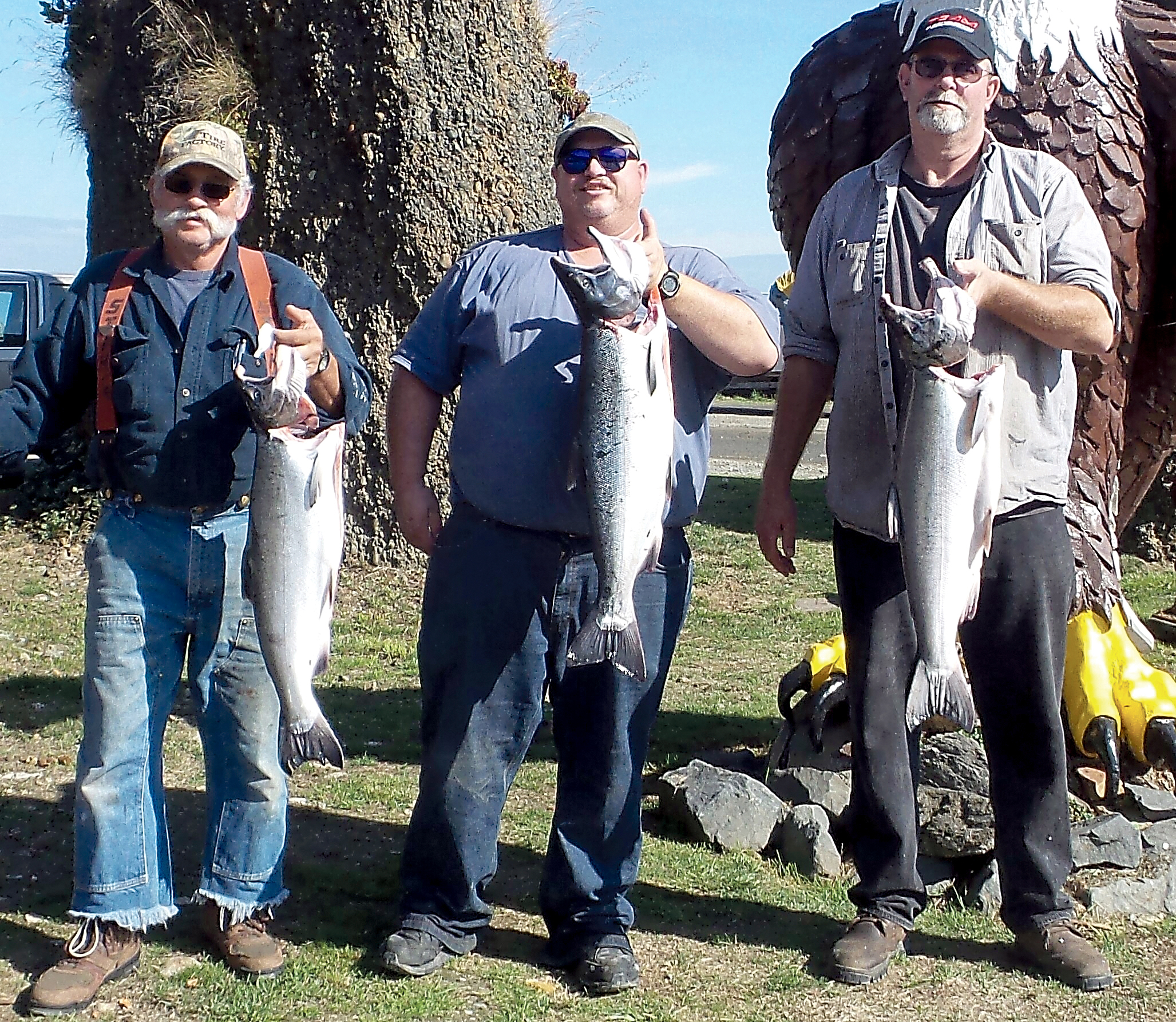WITH THE COHO opener on the Dungeness River’s lower reaches delayed due to low stream flows, the state Department of Fish and Wildlife has helped achieve two aims.
Only of those, however, was included in the official press release announcing the delay, which affects the Dungeness River from the mouth upstream to the hatchery intake pipe at river mile 11.3.
The state said that current water flow on the Dungeness is well below the mean flow for this time in October.
Low water flows are common out on the West End this time of year, my trip to cover a Forks soccer game sent me across depleted but open Sol Duc and Calawah rivers last Saturday.
Why then this Dungeness River delay?
The lack of flow leaves Dungeness chinook salmon, an Endangered Species Act listed stock within the Puget Sound Evolutionarily Significant Unit, particularly susceptible to disturbance as their spawning activities conclude.
Basically, if this stretch of river is rocking, anglers shouldn’t come knocking.
The other aim, is avoiding a “snagfest,” a by-product of a low water level coinciding with a salmon run.
These offer a chance for anglers to illegally snag fish on their bodies or heads and are commonplace on rivers like the Big Quilcene in Jefferson County, or the Skokomish in Mason County.
If you see snagging occurring, there’s no need to confront the guilty party.
Instead, report it to law enforcement by phoning 877-933-9847 or texting “WDFWTIP” and the report to 847411.
Enough rainfall is forecast in the following week to recharge the system and draw coho into the river by Thursday, Oct. 16.
If the rains don’t fall in the Dungeness Valley, the delay will extend and anglers will have to hold off on that generous daily limit of four coho of a minimum length of 12 inches.
Dovetailing nicely with the delay, is an upcoming presentation on those very same Dungeness chinook hosted by the Puget Sound Anglers North Olympic Peninsula chapter.
Jamestown S’Klallam tribal fisheries manager Scott Chitwood will present “Dungeness Chinook, What Do We Know?” at Trinity United Methodist Church, 100 S. Blake Ave., at 6:45 p.m. Thursday, Oct. 16.
Chitwood will discuss factors that may be restraining the successful recovery of the Dungeness king run, exploring “limiting factors” and what can be done to help.
In a biological sense, limiting factors can be anything that constrain the productivity of a species and thereby prevent them from achieving their full biological potential.
Land management practices, irrigation runoff, a lack of water conservation efforts, loss of natural floodplain practices, an absence of woody debris in the river to create prime spawning pools — all of these could be considered limiting factors in the rehabilitation of Dungeness River chinook.
For more information on this talk or on the Puget Sound Anglers, phone 360-582-0836 or visit www.psanopc.org.
Deer season Saturday
The modern firearm season for deer, likely the most popular hunting season in the state, opens Saturday.
Rain is forecast for the weekend, so that moisture should provide some sound dampening so hunters may stand a better shot at the antlered set this opening weekend compared to year’s past.
Black-tailed deer are the prime species on the North Olympic Peninsula.
A study conducted by Fish and Wildlife research scientist Cliff Rice found that more deer were found east of the Elwha River.
I would have thought there were more deer out on the West End, but Rice found that some of the largest deer were found east of the Elwha in the foothills in a mix of state Department of Natural Resources and private lands.
North Olympic Peninsula hunters will predominately hunt in District 16, with just a small District 15 overlap found in the Coyle and Olympic Game Management Units in eastern Jefferson County.
Black-tailed deer season runs through Saturday, Oct. 31.
There are multiple licenses that allow people to hunt deer.
An adult resident deer-only license costs $44.90. A deer and elk combination license is $84.50.
When purchasing a license, everyone born after Jan. 1, 1972, must show proof that they have successfully completed a hunter education class.
Anyone hunting deer during the modern firearm season is required to wear fluorescent hunter orange clothing.
A minimum of 400 square inches must be worm above the waist and be visible from all sides. A hat alone does not meet this requirement.
Be smart and be safe, and enjoy yourselves out there in the wilderness.
For more information on hunting prospects in District 16, visit tinyurl.com/PDN-D16Hunting.
For the general hunting regulations, visit tinyurl.com/PDN-HuntingRegs.
________
Outdoors columnist Michael Carman appears here Thursdays and Fridays. He can be reached at 360-452-2345, ext. 5152 or at mcarman@peninsuladailynews.com.

